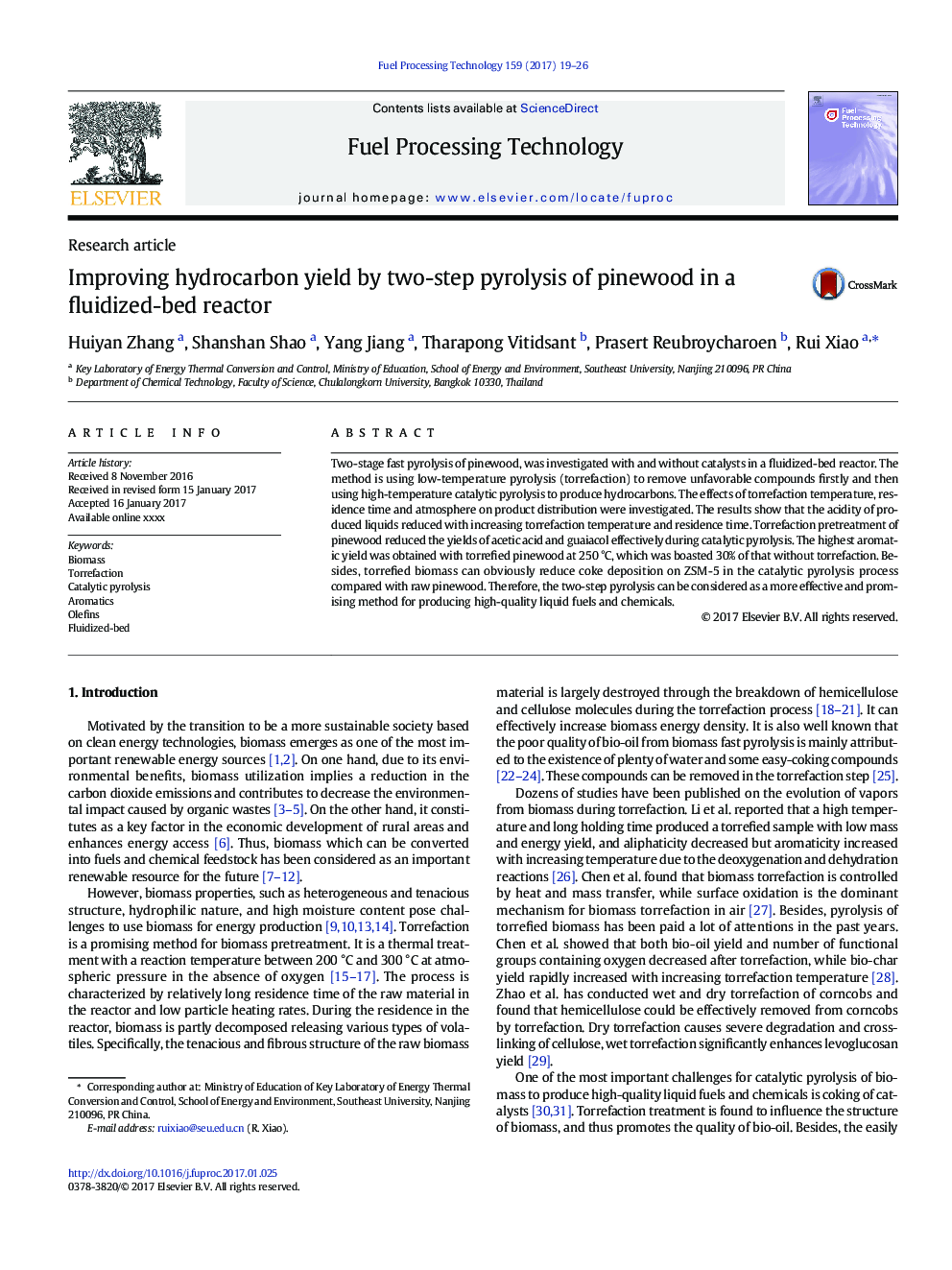| Article ID | Journal | Published Year | Pages | File Type |
|---|---|---|---|---|
| 4914339 | Fuel Processing Technology | 2017 | 8 Pages |
Abstract
Two-stage fast pyrolysis of pinewood, was investigated with and without catalysts in a fluidized-bed reactor. The method is using low-temperature pyrolysis (torrefaction) to remove unfavorable compounds firstly and then using high-temperature catalytic pyrolysis to produce hydrocarbons. The effects of torrefaction temperature, residence time and atmosphere on product distribution were investigated. The results show that the acidity of produced liquids reduced with increasing torrefaction temperature and residence time. Torrefaction pretreatment of pinewood reduced the yields of acetic acid and guaiacol effectively during catalytic pyrolysis. The highest aromatic yield was obtained with torrefied pinewood at 250 °C, which was boasted 30% of that without torrefaction. Besides, torrefied biomass can obviously reduce coke deposition on ZSM-5 in the catalytic pyrolysis process compared with raw pinewood. Therefore, the two-step pyrolysis can be considered as a more effective and promising method for producing high-quality liquid fuels and chemicals.
Related Topics
Physical Sciences and Engineering
Chemical Engineering
Chemical Engineering (General)
Authors
Huiyan Zhang, Shanshan Shao, Yang Jiang, Tharapong Vitidsant, Prasert Reubroycharoen, Rui Xiao,
